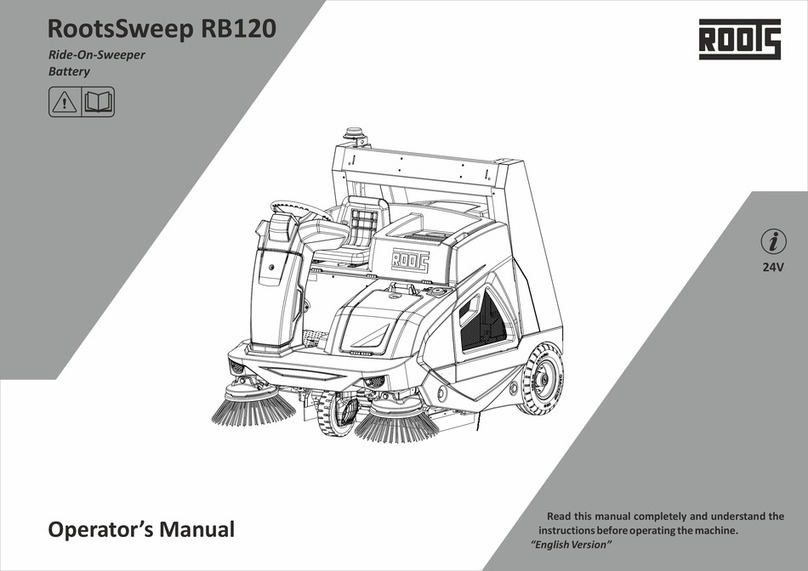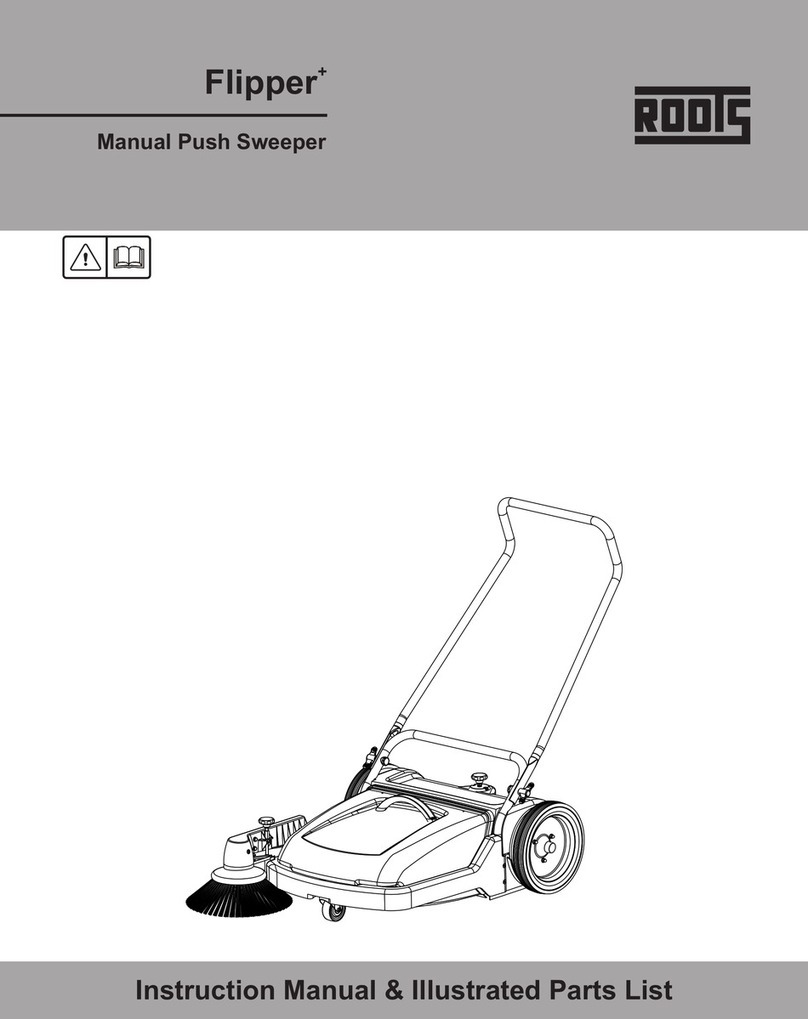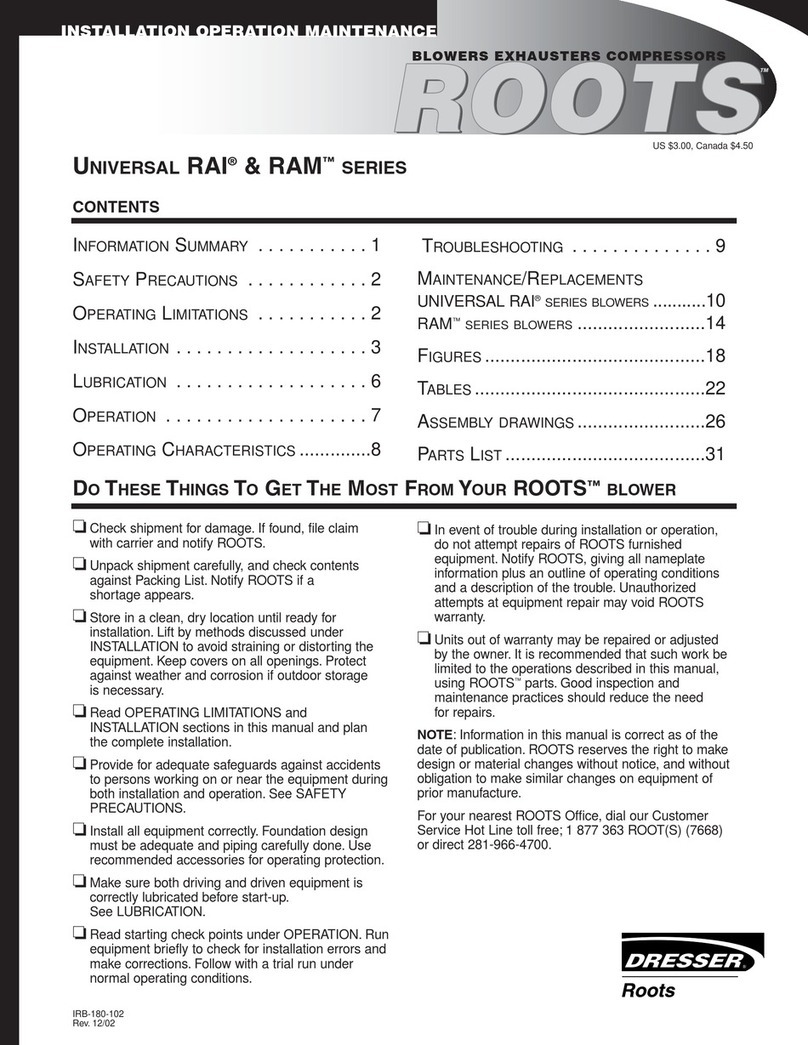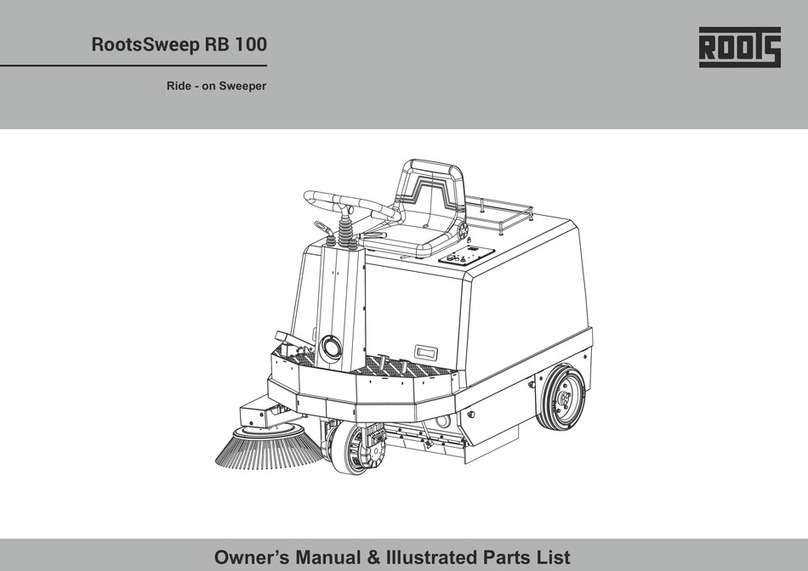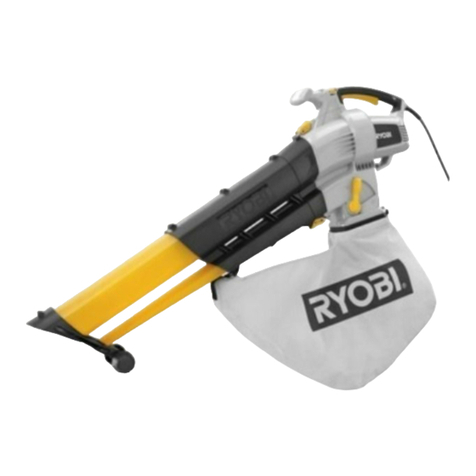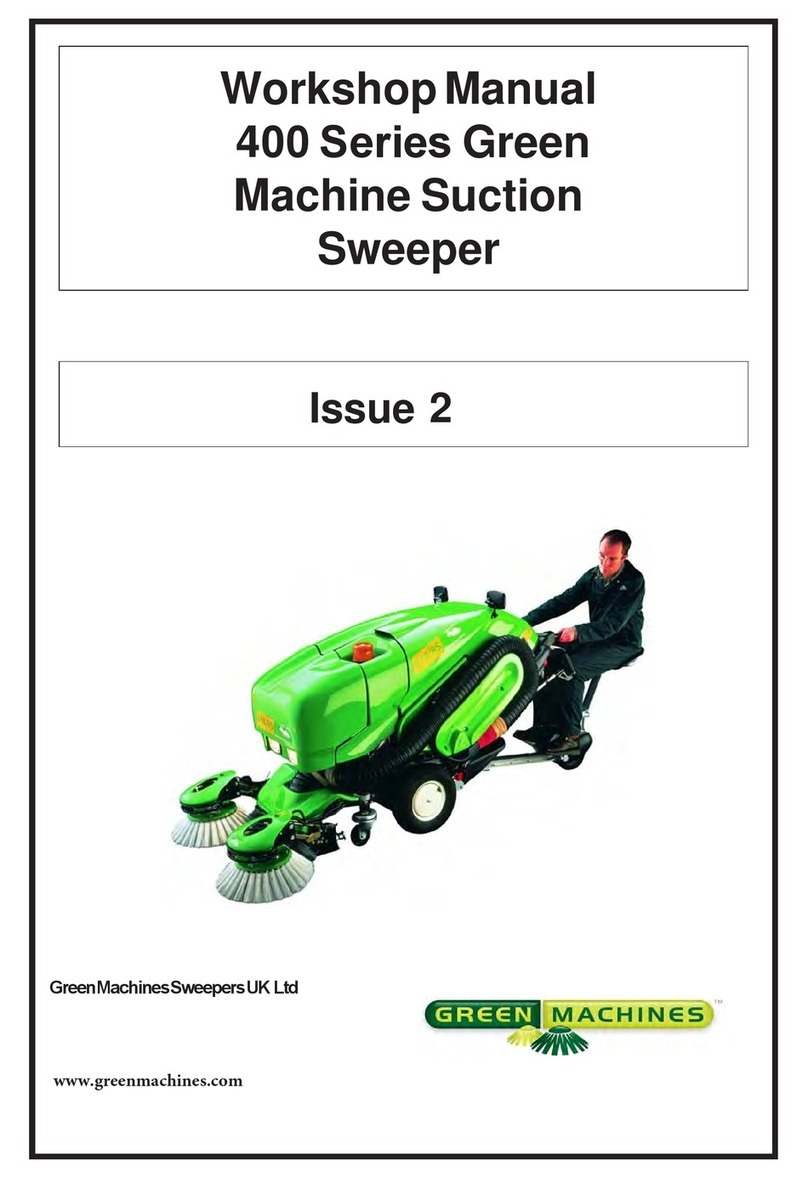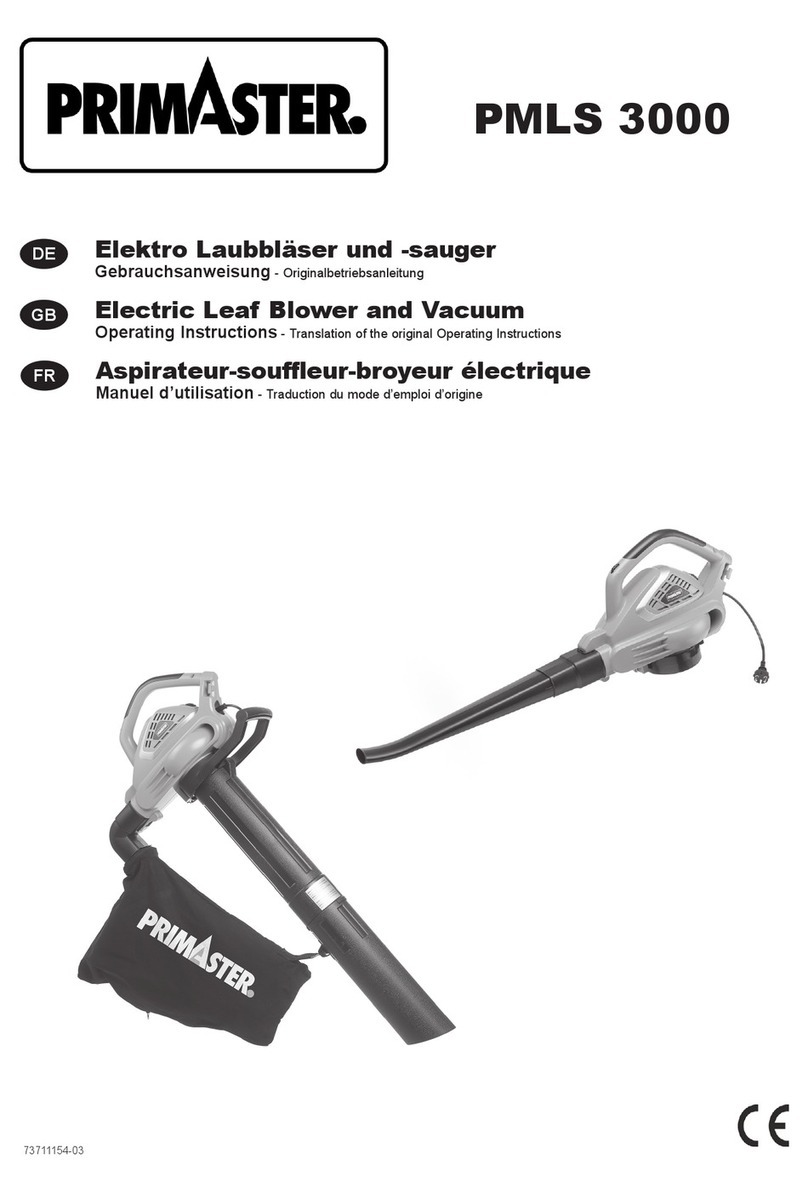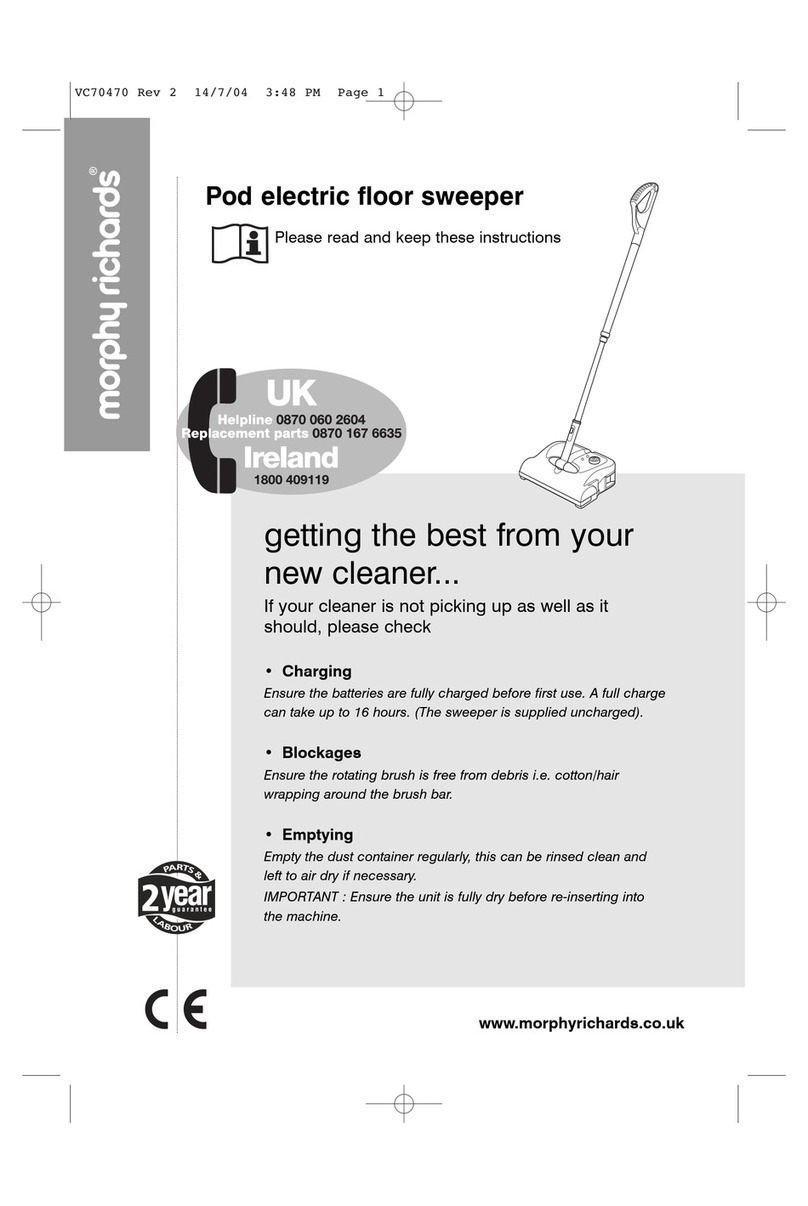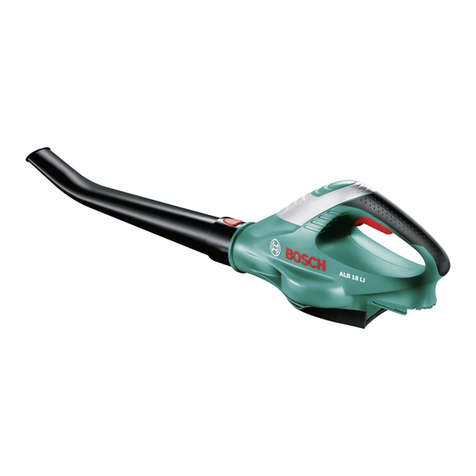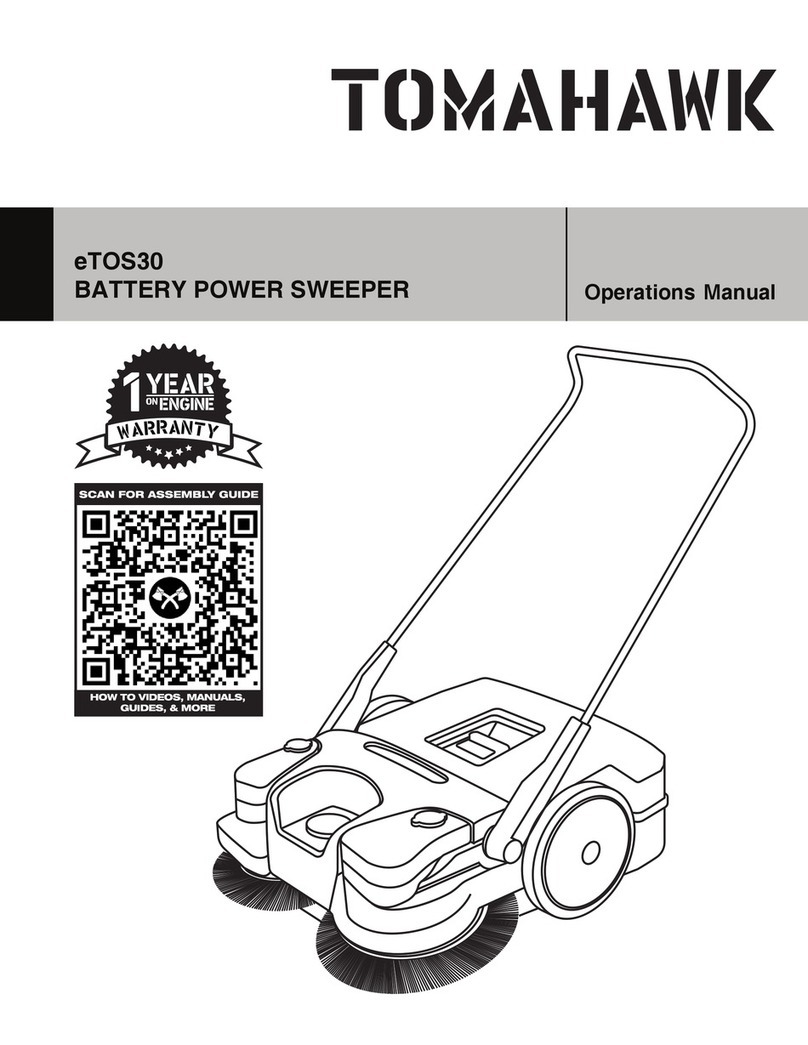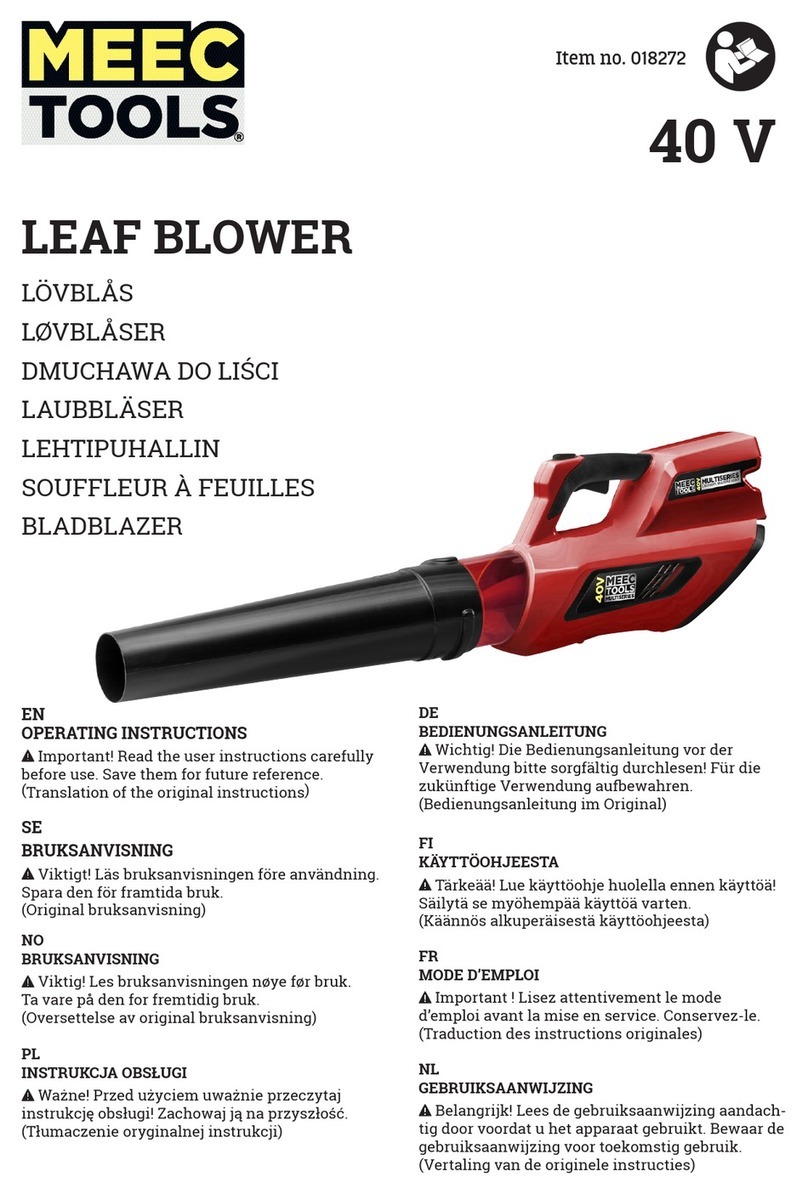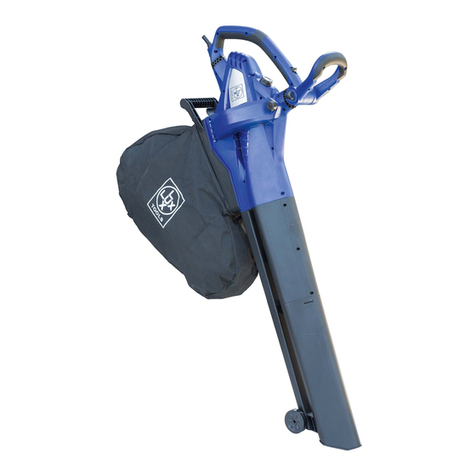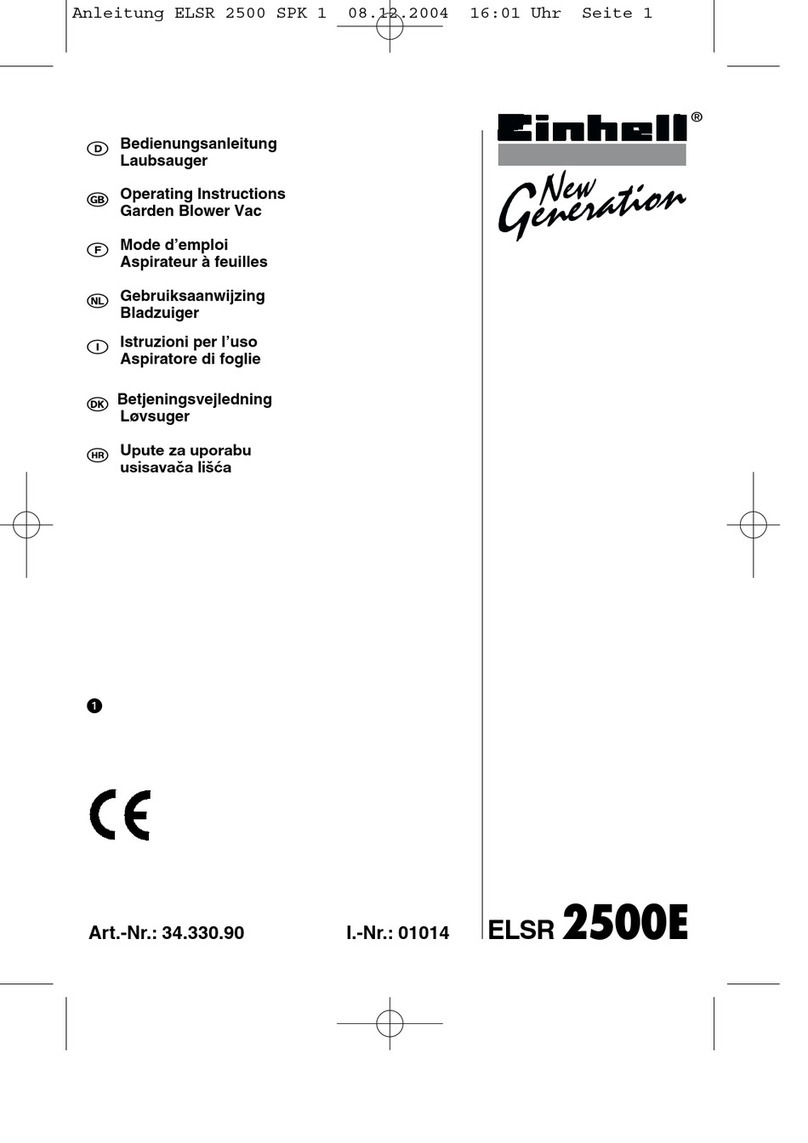ROOTS Dresser Whispair MAX User manual

I
ROOTS
rfpm4
JYHLTHb~M~
BLOWER
13
/4
-31
/2
inch
gear
diameter
INSTRUCTIONS
ROTARY
LOBE
BLOWERS
NUMBERS IN ( ) ARE METRIC EQUIVALENTS
INFORMATION
SUMMARY
This
page
Receiving
...
Installing
Operating
...
OPERATING CHARACTERISTICS 2
Description
...
Control
...
Protection
OPERATING L1MITATIONS 3
Pressure
...
Temperature Speed
INSTALLATION
3,4
Mounting
Piping Driving
LUBRiCATION 5
Oil
Fill
...
Servicing Greasing
OPERATION 5
Starting
Testing
Adjustment
TROUBLE SHOOTING 6
Capacity
...
Power Heating
SAFETY PRECAUTIONS
7'
Physical
...
Operating General
MAINTENANCE/REPLACEMENTS
7,8
Servicing
...
Clearances
...
Repairs
PARTS DRAWiNGS
9.11
SALES OFFICES 12
To
Get
The
Most
From
Your
Roots
Blower
II
Check
shipment
for
damage
in
transit.
After
filing
claim
with
carrier,
notify
nearest
Roots
Sales Office
or
fac-
tory.
aUnpack
shipment
carefully
and
check
contents
against
Packing
List.
Notify
Sales Office
or
factory
if
a
shortage
appears.
E:I
Store
in
aclean,
dry
location if
immediate
installation
is
not
to
be
made. Keep covers on all openings
and
protect
against
weather
and
corrosion.
IEIRead
LIMITATIONS
and
INSTALLATION
sec-
tions
in
this
book
and
plan
the
complete
installation
accordingly.
BProvide
adequate
safeguards
against
accidents to per-
sons
working
on
or
near
the
blower. See
PRECAUTIONS.
mInstall
correctly,
using
recommended accessories
to
protect
blower
during
regular
operation.
Ii
Lubricate
blower
and
drivin~
equipment
before
operating. See
LUBRICATION.
m
Read
starting
check
points
under
OPERATION,
then
operate
blower briefly
to
check for obvious faults.
Make
corrections before proceeding
with
a
trial
run
under
nor-
mal
operating
conditions.
mIn
event
of
trouble
during
installation
or
operation
of
anew unit, do
not
attempt
repairs.
Notify
nearest
Sales
Office, or
factory
giving all blower
nameplate
information
and
operating
conditions.
EUnauthorized
attempts
at
equipment
repair
may
void
Manufacturer's
warranty.
Units
out
of
warranty
may
be
repaired or
adjusted
by
the
owner.
It
is recommended
that
such
work be
limited
to
the
operation
described
in
this
manual,
using
Factory
Parts.
Good inspection
and
maintenance
practices
should
reduce
the
need for repairs.
See
Distributor
List
on
last
page
for
parts
and
service
after
warranty
period.
NOTE -Information in
this
manual is correct as
of
the date
of
publication. The Manufacturer reserves the right to make design
or
material changes
without
notice, and
without
obligation to make
similar
changes on equipment
of
prior manufacture, •
Bulletin
/RB-131-778

The Roots
rotary
lobe blower
is
apositive displace-
ment
type
unit, whose pumping capacity is determined by
size, operating speed, and
pressure
conditions.
It
employs
two double-lobe impellers mounted on parallel shafts and
rotating in opposite directions within acylinder closed
at
the ends by headplates. As the impellers rotate, air is
drawn into one side
of
the cylinder and forced out
the
opposite side against
the
pressure
existing
there.
The
pressure developed, therefore, depends on
the
resistance
of
the
discharge system.
Effective sealing of
the
blower inlet
area
from
the
discharge
area
is accomplished by use of very small
operating clearances. Resulting absence of moving contacts
eliminates
the
need for any internal lubrication. Clearances
between
the
impellers during rotation
are
maintained by a
pair of accurately machined timing gears, mounted on
the
two shafts extended outside
the
air chamber.
The proprietary Whispair blower design provides a
chamber on
the
discharge side
of
the cylinder.
From
this
chamber two or more slots open back into
the
two
alternately closed pocket areas
of
the
cylinder, shown as A
and B
in
Figure
1.
These slots,
at
certain impeller
positions, allow discharge
pressure
to
bleed into
the
normally low
pressure
pockets. They also provide a
jet
action
on
the
impellers in the direction
of
rotation. Gradual
pressure
build-up
in
the
pockets,
to
alevel almost equal
to
the discharge pressure, reduces backflow
rate
at
the
instant of pocket discharge so
that
pulsing and shock noise
are minimized. This permits operation
at
higher speeds
with conservative noise levels, and
in
most cases enables
use of asmaller unit
to
produce required capacity.
In
Figure
1, flow is left
to
right
from blower
inlet
to
discharge. The lower impeller is mounted on
the
driving
shaft, and
rotates
counterclockwise. As shown in Position
1, it is delivering ameasured volume
(A)
into
the
discharge
pressure chamber.
At
the
same time, space
(B)
between
the
upper
impeller and cylinder wall is filling with another
and equal volume
at
atmospheric or inlet pressure.
It
is
about
to
be sealed off by
the
clockwise rotation
of
this
impeller, for delivery
to
the
dishcarge.
Position 2shows the inlet
area
sealed,
but
some
discharge pressure is now
entering
space
(B)
through
the
slot passage, as indicated by
the
small arrows. Force of this
jet
gives arotative assist to
the
impeller, while also build-
ing
pressure
in sealed space
(B).
Rotation continues
to
Position
3,
where volume
(B)
is delivered
to
the
discharge
chamber in
the
same manner as volume
(A)
in Position
1.
Because
of
the almost complete
pressure
equalization
through
the
slot,
no
sudden shock occurs
at
this point.
One complete revolution
of
the
driving shaft
alternately traps four fixed and equal volumes of air (two
by each impeller) and pushes them through
to
the
discharge. The pumping capacity of alobe blower operating
at
aconstant speed therefore remains relatively independ-
end of reasonable inlet or discharge
pressure
variations.
To
change capacity,
it
is necessary to change speed
of
rotation.
No
attempt
should
ever
be made
to
control capacity by
means of a
throttle
valve in
the
intake or dishcarge piping.
This will not only increase
the
power load
on
the
driver,
but
can also overload and seriously damage
the
blower.
Likewise, if apossibility exists
that
flow
to
the
blower inlet
may be cut off during normal operation of aprocess,
then
an adequate vacuum relief valve must be installed near
the
blower. Apressure
type
relief valve in
the
dishcarge line
near
the
blower is also strongly recommended for
protection against cut-off
or
blocking in this line.
When abelt drive is employed, blower speed can
usually be adjusted
to
obtain desired capacity by changing
the
diameter
of
one or both sheaves, or by using a
vari-speed motor pulley.
In
adirect coupled arrangement, a
variable speed motor or transmission is required. or excess
air may be blown off
through
amanually controlled
unloading valve and silencer. See Figure
3.
If
returned
to
the
blower inlet, air
must
be cooled
to
lOooF (38°C)
through aby-pass arrangement.
Before making any change
in
blower capacity, or
operating conditions, contact the
nearest
Roots Sales Office
for specific information applying
to
your particular blower.
In
all cases, operating conditions
must
be maintained
within
the
approved range of pressures,
temperatures
and
speeds as
stated
under LIMITATIONS. Also,
the
blower
must
not
be
used to handle air containing liquids or solids.
Serious damage to
the
rotating
parts
will result.
To permit continued satisfactory. performance, a
blower
must
be operated within certain approved limiting
conditions. The manufacturer's
warranty
is,
of
course, also
contingent
on
such operation. Maximum limits for
pressure,
temperature
and speed
are
specified here for
various blower sizes when operated under
standard
atmospheric conditions. Do not exceed
anyone
of
these
limits.
Example: The listed maximum allowable
temperature
rise (increase in air
temperature
between inlet and
Position
1
Position
2
Position
3
Figure
1.
Air
Flow Through
AWhispair
Blower
2

Table 3 -
Maximum
Speeds
must
be reduced
by
2/3
of
the
difference
between
ambient and
the
actual measured inlet tempera-
ture.
B. Average of inlet plus discharge
temperature
should
not exceed 250°F. (121°C), except
that
frame 1701
is limited
to
145° (63°C) average.
C.
Maximum discharge
temperature
for frame 1701 is
190°F. (88°C).
For
J-series
frames
the
maximum is
320°F. (160°C).
SPEED
RANGE -Whispair blowers may
be
operated
at
speeds up
to
the
maximums listed
here
for
the
various
frame sizes. They may
be
direct coupled
to
3550
RPM
motors, or to 1750 motors if
pressure/temperature
conditions are within limits.
At
,lower speeds, excessive
temperature
rise may
be
the
principle consideration.
Roots blowers are internally
treated
at
the
factory
to
protect against normal atmospheric corrosion before
installation. Maximum period of protection is one
year
under average conditions,
if
plugs or seals are not
removed. Protection against chemical or salt
water
atmosphere is not provided. Do not remove seals until
ready
to
start
installation, as protection will be lost
by
evaporation.
NOTE
-
If
there
is
to
be an extended period
between
installation and
startup,
the
following
steps
should
be
taken
to
insure corrosion protection:
1. Coat internals of cylinder and gearbox with
Motorstor or equivalent.
Repeat
once a
year
or as
conditions may require. Motorstor is oil soluble and
does not have to
be
removed before lubricating.
If
desired, Motorstor may be removed from within
the
cylinder shortly before
startup
by spraying afine
mist of petroleum solvent
through
the
blower while
it is running
at
aslow speed with open inlet and
discharge, or
it
can remain in
the
blower
if
it
is not
harmful
to
the
operation of
the
connected system.
Motorstor is aproduct of
Daubert
Chemical Co.,
2000 Spring Rd., Oak Brook, Ill. 60521.
2.
Fill drive end
bearing
cavities with
grease
as
specified in lubrication section.
3.
Paint
shaft extension and all
other
exposed
machined surfaces with Nox-Rust X-145 or equiva-
lent.
4.
Seal inlet, discharge, and all
vent
openings with
tape.
It
is not recommended
that
the
unit be
set
in
place, piped
to
the
system, and allowed
to
remain
idle for
extended
periods.
If
any
part
is left open to
atmosphere,
the
Motorstor vapor will escape and
lose
its
effectiveness.
5.
Units are not to be subjected to excessive vibration
during storage.
If
stored
outdoors, provide coverage
such as atarpaulin
or
lean-to.
3500
4360
7100
4970
3550
Maximum
RPM
Frame Size
1701
1702, 1704, 1707
1702J, 1704J, 1707J
2504J,2506J,2510J
3505J, 3509J, 3514J
Table 2 -
Allowable
Temperature Rise
TEMPERATURE
-Various blower frame sizes
are
approved only for installations
where
the
following
temperature
limitations can be maintained in service.
A. Maximum
temperature
rise (T.R.) in
Fahrenheit
degrees
(CO)
must not exceed listed values when
the
inlet is at ambient
temperature
and not higher
than
lOooF (38°C). Ambient is considered as
the
general
temperature
of
the
space around
the
blower. This is not outdoor
temperature
unless
the
blower is installed outdoors.
Note -
If
inlet
temperature
is higher than lOooF.
(38°C),
the
above allowable
temperature
rise values
discharge) for any particular blower may occur well before
the
maximum speed or maximum
pressure
rating
is
reached.
Temperature
rise
then
is
the
limiting condition. In
other
words,
the
operating limit is always to
be
determined
by
the
maximum
rating
reached first, and
it
can be
anyone
of
the
three:
pressure,
temperature
or
speed.
Be
sure
to
arrange
connection or
taps
for
ther-
mometers and
mercury
type
pressure
or
vacuum gauges
near
the
inlet and discharge connections of
the
blower.
These, along with agood tachometer, will enable periodic
checks of operating conditions to
be
made easily.
Note -specially ordered blowers with non
standard
construction, or with impeller end clearances
greater
than
shown in Table 6, will not have
the
operating limits
specified here. Contact your Roots Sales Office for specific
information.
PRESSURE
-
On
pressure
service,
the
pressure
differential in pounds
per
square
inch, (kPa)
between
blower inlet and discharge,
must
not
exceed
the
figure
listed below for
the
specific blower frame size concerned.
Also, in any
system
where
the
blower inlet is
at
apositive
pressure
above atmosphere,
the
discharge
pressure
must
never
exceed
25
PSI
(172
kPa) gauge
regardless
of blower
size.
On
vacuum service, with
the
discharge going
to
atmospheric
pressure,
the
inlet suction
or
vacuum in inches
of
mercury
(kPa)
must
not
be
greater
than
the
values listed
for
the
specific frame size.
Table 1 -
Allowable
Pressure
Conditions
Max.
Differential
Max.
Inlet
Frame Size Pressure -
PSI
Vacuum-Ins.
Hg.
(kPa) (kPa)
1701 5(34)
N/A
1704 6(41) 8(27)
1702J 10 (69)
14
(47)
1702,2504J,3505J
10
(69)
12
(40)
1704J,2506J,3509J 6(41) 12 (40)
1707,1707J 4(28) 6(20)
2510J 4(28)
8.5
(29)
3514J 4(28) 8(27)
Frame
T.
R.
Frame
T.
R.
Size
F.
°
(CO)
Size
F.
°
(CO)
1701 90 (50) 2504J 250 (139)
1702 320 (178) 2506J
140
(78)
1704
125
(69) 2510J 90 (50)
1707 60 (33) 3505J HJU
(lU~)
1702J 320 (178) 3509J 135 (75)
1704J
125
(69) 3514J 90 (50)
1707J 60 (33)
3

K-20394
..
DISCHARGE
-~--
UNLOADING VALVE
DISCHARGE SNUBBER
~
ROVIDE
CONNECTIONS FOR
THERMOMETERS
AND PRESSURE OR
-
~~~~U~N~~?SEcSH~~~~~
TO
BLOWER
IPRESSURE
RELIEF
VALVE
\r
~
CHECK VALVE
~~~':t=6
CROSS
''-,L
FLEXIBLE
CONNECTORS
i_
ALTERNATE
ARRANGEMENT
OF
INLET
DRY
TYPE
INLET
FILTER
[
INLET
CLEANER-
SILENCER
INLET
SILENCER
--
_
Whispair blowers normally have aflattened bulge
on
one side of the cylinder with apipe connection extending
from it, as shown
in
Figure
1.
These units must be driven
with the correct rotation
to
make this connection
the
discharge. Figure 2shows
the
standard
drive shaft
locations as viewed from
the
drive end, and
the
correct
counterclockwise direction
of
rotation.
For
special con-
struction (drive shaft
at
the
top
or
right), correct rotations
would be opposite or clockwise. An arrow near
the
shaft
indicates
the
rotation
to
be used. Some few blowers
(1701,
1702,1704,1707)
do
not have cylinder bulge. These may be
operated in either direction, as necessary
to
produce
discharge
at
the more convenient connection.
Piping should
be
accurately
squa~ed
with
the
blower,
supported independently, and sized no smaller than
the
connections
on
the
blower. Use only clean, new pipe and
make certain
it
is free
of
scale, cuttings, weld beads,
dirt
or
any
other
foreign material. To guard against damage
to
blower, especially when an inlet filter is not used, install a
screen of
16
mesh backed with
hardware
cloth
at
or
near
the
inlet opening. Make provisions
to
clean
the
screen of
collected debris
after
afew hours operation, and
periodically thereafter. Install an inlet filter in dusty or
sandy locations.
Figure
3shows atypical complete installation
of
blower and accessories where
quietest
operation is wanted.
Note
the
absence of
throttle
or shut-off valves in either
dishcarge or intake piping.
If
it
is possible for air flow
to
be
cut off in either
of
these
lines, make provisions
to
add a
pressure
and/or
vacuum relief valve as discussed
under
OPERATING CHARACTERISTICS.
Figure 3. AComplete Blower Installation, With
Alternate Inlet Arrangement
In
some installations
it
may be desirable
to
use only an
inlet silencer-cleaner supported directly from
the
blower
connection. This is shown as an
alternate
arrangement
in
Figure
3.
Weight
must
be
kept
to
aminimum
to
prevent
blower casing distortion when
the
inlet is
on
the
side.
Ablower may be driven by direct coupling
to
the
driver, or by V-belt
to
obtain
other
speeds within
the
approved range. Refer
to
LIMITATIONS before selecting
the
drive speed. Also, be
sure
to
arrange for suitable
protective guards as discussed in PRECAUTIONS.
Lubricated couplings
are
the
preferred type,
but
Lovejoy Type Lor similar non-lubricated
type
may also be
used. Coupling halves
must
correctly fit blower and driver
shafts, so
that
only light
tapping
is required
to
install each
half. The two shafts
must
be as accurately aligned as
possible, both horizontally and vertically,
to
limit operating
strain on either shaft.
Proper
gap between coupling halves
must
be established with
the
motor
armature
on
its
electrical center. This will minimize
the
chance for end
thrust
on
the
blower shaft.
Figure
2.
Rotation and Discharge For Standard
Blower
t0
6.
Rotate
drive shaft
three
or four revolutions every
two weeks.
7.
Prior
to
startup,
remove flange covers
on
both inlet
and discharge and inspect internals
to
insure
absence of
rust,
check all internal clearances. Also,
at
this time, remove
gear
cover and inspect
gear
teeth
for
rust.
Install blower
in
aprotected indoor location, if
possible. However, an unprotected outdoor installation will
be satisfactory if correct lubrication for expected
temperatures
is provided.
Just
before
starting
the
installation, remove plugs
or
covers from inlet and
discharge connections. Inspect for
dirt
or
foreign objects
inside
the
blower,
then
turn
dirve shaft by hand
to
make
sure
that
it
rotates
freely.
Mount blower in alevel position. Use of arigid, solidly
supported, smooth flat plate is recommended. Make
sure
blower feet
rest
evenly
on
the
plate before fastening down.
Twisting
or
cramping
the
blower in mounting will cause
impeller contact and binding during operation.
On
blowers
having
two
feet, loosening
the the
screws (Item
123)
into
the headplate flanges should permit adjusting
the
feet for
even contact with
the
plate. Then fasten both feet
to
the
plate with screws and lockwashers, and
retighten
the
headplate screws carefully.
On
blowers with four feet, this
procedure may not be successful. Shimming
under
one or
more feet may then be required
to
produce asolid
mounting.
Ablower factory-mounted on abase should not require
the
above adjustments. The assembly can become twisted
in
shipping, however, and
it
might be wise
to
loosen
the
foot hold-down screws
to
check foot contact with
the
mounting surface. The base should
then
be
mounted on a
solid foundation or heavy flooring, using shims as necessary
at
bolting points
to
prevent
warping
the
assembly.
Transmission of small operating vibrations to a
supporting
structure
in
some cases may be objectionable.
Use of vibration isolators,
or
vibration absorbing materials,
can be effective in overcoming this problem. To avoid
blower casing distortion,
the
treatment
used should be
applied under the motor-blower common mounting plate or
base,
rather
than directly under
the
blower feet alone.
Blower feet
are
detachable
to
allow converting aunit
having side connections
to
one with top and bottom
connections. Smaller units
(1700
and
2500
series) have only
one foot on each end. These
must
be
unbolted and
transferred
individually
to
the
opposite ends when making
this conversion
..
On
larger
blowers having four feet,
the
two
at
each end
are
unbolted and moved
90
0to new
positions on
the
same end. Units arranged for flange
mounting directly
to
C-Frame electric motors
are
available
only with side connections.
4

In
aV-belt drive,
the
blower
sheave
must
fit
its
shaft
accurately,
run
true,
and
be
mounted not more
than
1/
4 "
(7
mm) from
bearing
housing. A
tight
or
driving
fit will force
the
blower
impeller
out
of
its
normal position and cause
internal
damage. Aloose fit will probably
result
in
shaft
damage
or
breaking.
The
motor
sheave
must
also fit
correctly, and
be
properly
aligned with
the
blower sheave.
Failure
to
accomplish
this
will
result
in
the
blower impeller
being forced
against
one of
the
head
plates
during
operation, causing serious damage to
the
blower.
Adjust
motor
position on
its
sliding
base
so
that
belt
tension is in accordance with
the
drive
manufacturer's
instructions. Avoid excessive
belt
tension
at
all times.
Recheck tension
after
the
first
ten
hours
of operation, and
periodically
thereafter,
to
avoid slippage and loss of blower
speed.
Check blower
after
installation, and before applying
power,
by
rotating
the
drive
shaft
by hand.
If
it does not
rotate
freely, look for uneven mounting, piping
strain,
excessive
helt
tension
or
coupling misalignment. Do not
operate the blower at this time because
there
is no oil
supply in
the
gear
hou.se. Read LUBRICATION section.
The
oil
change
interval
will depend on
the
oil
operating
temperature
and
the
type
of oil.
For
agood
grade
industrial
type
non-detergent
oil with ablower discharge
temperature
of less
than
250°F, (121°C) oil change should
be made
every
1,000
operating
hours.
For
blower discharge
temperatures
of
higher
than
250°F
(121
DC),
more
frequent
oil
changes will
be
required.
Shaft
bearings
at
drive end of blower
are
grease
lubricated. All Whispair Max blowers have
pressure
type
grease
fittings in
the
bearing
housings. Only
greases
Table 5 - Oil
Sump
Capacities
Blower Top and
Bottom
Side
Frame
Series Connections (liters) Connections (liters)
1700 2-7/8
fl.
oz. (.085) 3-1/8
fl.
oz. (.092)
2500
8-1/2 fl. oz. (.251) 6-5/8
fl.
oz. (.196)
3500
11
fl.
oz. (.325) 8-5/8
fl.
oz. (.255)
classified
as
NLGI Group II high temperature greases with
synthetic bases should be used. Among these are Aero
Shell
16
and Mobil Grease 28. Mixing
of
soap base .and
synthetic base greases destroys the lubricity
of
both
with
resultant failure
of
the bearings. Drive end bearings must
be greased prior to initial start-up. Aregular greasing
schedule should be maintained per Table 6.
Check
gear
house oil level
every
week and add oil if
needed. Do not check or fill
oil
while
the
blower is running.
Blower Size Greasing
Interval
]70], 1707, 1707-J 700
operating
hours
25]0-J,35]4-J
]704, 1704-J, 2506-J 300
operating
hours
3509-J
]702, 1702-J, 2504-J 150
Operating
hours
3505-J
Table 6
Before
starting
the
blower for
the
first
time
under
power, recheck
the
installation thoroughly
to
reduce
the
likelihood of troubles.
Use
the
follQwing check list as a
guide,
but
also consider any
other
special conditions in your
installation.
1. Be
certain
no bolts,
rags
or
dirt
have been left in
the
blower casing.
2.
Be
certain
that
inlet piping is free of debris.
If
an
open outdoor air
intake
is used,
be
sure
the
opening
is clean and
protected
by
a
strong
screen.
3.
If
installation is
not
recent,
check blower leveling,
drive alignment,
belt
tension, and
tightness
of all
mounting bolts.
4.
Be
certain
the
proper
quantity
of
oil
is
in
the
gear
house.
5. Be
certain
the
driving motor
is
properly
lubricated,
and that. it
is
connected
through
suitable electrical
overload devices.
6.
Rotate
blower
shaft
several
times by hand
to
make
sure
impellers
are
free
at
all points, with no
rubbing
or bumping.
7. Check
motor
rotation
by momentarily pushing
the
start
button.
If
not
in accordance with
arrow
on
blower,
reverse
the
motor
connections.
Initial operation should
be
carried
out
under
"no load"
conditions by opening all valves and
venting
the
discharge
to atmosphere, if possible.
Then
start
motor briefly, listen
for unusual noises, and check
the
blower coasts freely
to
a
stop. If
no
problem
appears,
repeat
this check and
let
Blower with Side Connections
K-203~
OIL DRAIN
-OIL
LEVEL
HOlE\
Blower
with
Top/Bottom Connections
\OIL
FILL
HOLE
\
VENT
Shaft
bearings
at
the
gear
end of
the
blower
are
splash
lubrieated by one
or
both
gears
dipping into an oil
sump
formed in
the
headplate. Before starting the blower, fill
this
sump
as
instructed
below:
Figure 4. Gearhouse Oil Filling
1. Remove
oil
fill
plug (item 140, Fig. 6, 7, and
8)
from
the
gear
end headplate. Also
remove
oil
level
plug
from
the
gear
cover.
2.
Pour
oil
through
fill hole slowly till
the
oil
starts
to
run
out
of
oil
level hole.
3.
After
the
oil
has stopped
running
out
of oil level
hole, replace
the
oil fill and level plugs. Apply
Per-
matex
No. 2
or
an equivalent
sealant
on
oil
level
plugt.hreads
prior
to
installation.
Recommended
oil
grades
for various
operating
conditions are listed in Table 4. Quantities
required
to
fill
sumps in
the
different blower frame sizes for
either
vertical
or
horizontal piping
arrangements
are
listed in Table
5.
Table 4 - Recommended Oil Grades
Ambient
Discharge Viscosity Approx.
Temperature
Pressure-PSIG
SSU lOO°F.
SAE
No.
(kPaG) (38°C)
Below
~lOoF
(32°C) Below 2.0
(14)
500-700
30
Over gO°F (32°C) Below 2.0
(14)
700-1000
40
Below !lO°F (32°C) Over 2.0
(14)
700-1000
40
Over
90°F
(32°C) Over 2.0
(14)
1000-1200
50
.-tt--
5

the
motor
run
alittle longer.
If
any questions
exist,
investigate
before
proceeding
further.
Now
operate
the
unit for about
10
minutes.
During
this
run
feel cylinder and
headplates
for
development
of hot
spots
that
indicate
rubbing
contacts. Also listen for
knocking sounds (contact
between
impellers), and watch for
any change or
increase
in vibration.
At
the
end
of
this
run,
check
the
inlet
screen
near
the
blower for collected debris.
After
above
tests
are
completed and any
necessary
corrections made, afinal check
run
of a
least
one hour
should be
performed
under
normal
operating
conditions.
Start
unloaded as above, and apply
the
system
pressure
load
gradually
by closing
the
discharge
atmospheric
vent.
Use a
mercury
manometer
connected
to
the
discharge
piping
to
see
that
the
pressure
rating
of
the
blower
in
not
exceeded. Also use good
thermometers
to
determine
the
temperature
rise
through
the
blower. Both figures should
satisfy
the
conditions listed
under
LIMITATIONS. Check
the
unit frequently
during
this
run.
Shut
dowl! immediately
if excessive noise or
heating
develops and
refer
to
TROUBLE SHOOTING CHECK LIST.
Assuming all
tests
are
satisfactory,
the
blower will
now
be
ready
for continuous full load operation.
During
the
first
several
days, make periodic checks to
determine
that
all conditions remain acceptable
and
steady.
These checks
may
be
particularly
important
if
the
blower
is
part
of
a
process
system
where
conditions may
vary.
At
the
first
opportunity,
stop
the
blower and clean
or
remove
the
inlet
screen.
Also recheck leveling, coupling alignment
or
belt
tension, and mounting bolts for
tightness.
If
operation
proves
that
blower
capacity is alittle too
high for
the
actual air
requirements,
a'
small excess may
be
blown off
through
the
manual
vent
valve.
It
is not good
practice
to
use
the
pressure
relief valve
as
an automatic
vent.
Such use may cause.
the
discharge
pressure
to become
excessive, and can also
result
in failure
of
the
valve itself.
If
the
blower capacity is low,
it
may
be
possible
to
increase
the
drive speed. Before
attempting
this
change, contact
the
TROUBLE
SHOOTING
CHECKLlS't
ITEM
POSSIBLE
CAUSE
1
Speed
too low
2
Wrong
rotation
3
Obstruction
in piping
4
Speed
too low
5
Excessive
pressure
rise
TROUBLE
No
AirFlow
Low Capacity
Excessive
Power
Overheating
of
Bearings
or
Gears
Vibration
6
7
8
9
10
11
12
13
14
15
16
17
18
19
Obstruction
in piping
Excessive
slip
Speed
too high
Pressure
too high
Impellers
rubbing
Inadequate
lubrication
Excessive
lubrication
Excessive
pressure
rise
Coupling misalignment
Excessive
belt
tension
Misaligmpent
Impellers
rubbing
Worn
bearings/gears
Unbalanced
or
rubbing
impellers '
REMEDY
Check
by.tachometer
and .c01npare with
speed
shown on
Roots
Order
Acknowledgment.
Compare actual
rotation
with
Figure
2.
Change
driver
if
wrong:
Check piping, screen, valves, silencer
to
assure
an open
flow
path.
See
item
1.
If
belt
drive, check for slippage and
readjust
tension.
Check inlet vacuum and discharge
pressure,
and com-
pare
these
figures with specified
operating
conditions
on
Order.
See
item
3.
Check inside of casing for
worn
or
eroded
surfaces caus-
ing excessive clearances.
Check
speed
and compare with Roots
Order.
See
item
5.
Inspect
outside of cylinder and head
plates
for high tem-
perature
areas,
then
check for impeller contacts
at
these
points.
Correct
blower
mounti~.g,
drive alignment.
Check oil
sump
level
in·
gearhouse,
and
try
to
inject
grease
in drive end bearings.
Check
gear
oil level.
If
incorrect,
drain
and refill with
clean oil of recommended
grade.
See
item
5.
Check carefully. Realign if questionable.
Readjust
for
correct
tension.
Seeitem
14.
See
item
10.
Check
gear
backlash and condition of bearings, and re-
place as indicated.
Scale
or
process
material
may build up on casing and im-
pellers,
or
inside impellers. Remove buildcup
to
restore
original clearances and impeller balance.
6

nearest
Roots
Sales Office for
recommendations
based
on
actual
requirements
and
operating
pressure/temperature
conditions.
For
equipment
covered
specifically
or
indirectly
in
this
instruction
book,
it
is
important
that
all
personnel
observe
safety
precautions
to
minimize
the
chances
of
injury.
Among
many
considerations,
the
following
should
particu-
larly
be
noted:
•Blower casing
and
associated
piping
or
accesories
may
become
hot
enough
to
cause
major
skin
burns
on
contact.
•
Internal
and
external
rotating
parts
of
the
blower
and
driving
equipment
can
produce
serious
physical inju-
ries.
Do
not
reach
into
any
opening
in
the
blower
while
it
is
operating,
or
while
subject
to
accidental
starting.
Cover
external
moving
parts
with
adequate
guards.
•
Disconnect
power'
before
doing
any
work,
and
avoid
By-passing
or
rendering
inoperative
any
safety
or
protective
devices.
•
If
blower
is
operated
with
piping
disconnected,
place
a
strong
coarse
screen
over
the
inlet
and
avoid
stand-
ing
in
the
discharge
air
stream.
•
Stay
clear
of
the
blast
from
pressure
relief
valves
and
the
suction
area
of
vacuum
relief
valves.
-
•Avoid
extended
exposure
in close
proximity
to
machinery
with
high
intensity
noise levels.
•
Use
proper
care
and
good
procedures
in
handling,
lifing, installing,
operating
and
maintaining
the
equip-
ment.
•Casing
pressure
must
not
exceed
25
PSI
(172 kPa)
gauge.
Do
not
pressurize
vented
cavities
from
an
exter-
nal
source,
nor
restrict
the
vents.
•Do
not
use
air
blowers
on explosive
or
hazardous
gases.
•
Other
potential
hazards
to
safety
may
also be
associated
with
operation
of
this
equipment.
All
per'
sonnel
working
in
or
passing
through
the
area
should
be
warned
by
signs
and
trained
to
exercise
adequate
general
safety
precautions.
Regular
inspection of
the
blower
and
its
installation,
along with complete checks on
operating
conditions, will
pay
dividends
in added life and usefulness.
Particular
attention
should be paid to lubrication of
timing
gears
and
hearings
in accordance
with
comments
under
LUB1tICA-
'fION.
Also
service
the
driver
per
manufacturer's
instructions,
and
lubricate
the
coupling
or
check
belt
drive
_'
tension. By use of
thermometers
and
guages,
make
sure
that
hlower
operating
temperature
and
pressure
remain
within allowed limits.
When
ablower is
taken
out
of
service
it
may
require
internal
protection
against
rusting
or
corrosion.
The
need
for such
protection
must
be a
matter
of
judgement
based
on
existing
conditions
as
well as length of down-time.
Under
atmospheric
conditions producing-
rapid
corrosion,
the
hlower
should be
protected
immediately.
Treatment
7
consists of
spraying
or
flushing
the
interior
with
a
mixture
of light oil and
keroesene.
Before
restarting,
check
internal
condition visually
and
rotate
the
drive
shaft
by
hand.
Should
adjustments
or
replacements
eventually
be
needed,
these
can
often
be
performed
locally
as
described
in
this
book,
after
obtaining
required
parts.
Personnel
should
have
agood
background
of mechanical
experience
and
be
thoroughly
familfar with
these
instruc:tions.
Major
repairs
not
covered
in
this
book
should
be
reJfrred
to
the
nearest
Sales Office
or
Distributor.
When
ordering
parts,
give all blower;
nameplate
information, plus
the
Item
Numbers
and
Na~es
as
taken
from
the
appropriate
assembly
drawing
in,
this
book.
Numbers
shown
in
brackets
( ) in
the
following
repair
procedures
correspond
to
Item
Numbers
in
theprawings.
REPLACEMENT
OF
GEARS
BEARINGS,
SEALS,
IMPELLERS
AND
SHAFTS
1. Remove
sheave
or
coupling from
blower
drive
shaft.
2.
Drain
oil from
gear
house
by
removing
lower pipe
plug (111).
3.
Remove
g-ear
cover
plate
(6),
being
careful
not
to
damage
gasket
(11)
..
4.
Remove
both
gear
:elamping
nuts
(102). Lock
impellers by
wedging
'between
lobes
to
prevent
rotation
while loosening
nuts.
5. Loosen all cap screw,s, (107) and (124) in
drive
end
headplate.
Insert
jack.~crews
in
threaded
holes and
01111
headplat~
away
from cylinder
about
1/4"
(7
mm).
H.
At
gear
end,
drive
both
impeller
shafts
toward
headplate
to
loosen
gears
from
taper
fits, and
remove
gears:
Avoid;,iiJamaging
shaft
threads
by
using- a
soft
metal,
pl'lstic
or
wood mallet.
7.
Remove
drive
end
headplate
(1) and cylinder (3),
and pull both
impellers
(4)
and
(5)
out
of
the
gear
end
headplate.
R.
Rt'move all
bearings
(100, 101) from
both
head-
platt's.
They
should be easily
removable
by
inserting
afing-er
or
an expandill,g tool in
the
shaft
hole.
Bt'arings
at
the
gear
end
can be
damaged
during
gt'ar
removal,
and
it is advisable
that
all four
lwarings be
replaced
when
a
blower
is
torn
down.
9. Removl' all
'shaft
seals
(117, 118) from
both
.hl'adplates by
driving
out
with
awood dowel
insPl'ted
through
thC'shaft
holes from thl'
rear.
1O.Install
nl'W
replaeenlC'nt sl'als in one
or
both
heanplatl's,
as
requiren
by
the
design.
After
lubricating-
the
outer
I'dlfE\ position seal
over
its
rl'cess with
the
-shaft sl'aling- lip facing out
as
shown
in
,Issembly
drawing.
The'n
prl'ss
evenly into plael'
until Ihe
spal
faee
is
even
with face of recess.
Lubricate
seal lip with light
g-rC'ase.
1"1.
Assemblp
~war
t'nd
headplatp
(2)
to eylinder (3).
, , Make
sun'
dpwC'1
sleeves
(108)
are
in place
in
the
two alignnwnl
~oles
in
flange l'ars,
then
insert
short
S<TPWS
in
thesp
holps and
tighten.
On 1700
Series
blowers Iht'st",
two
:scn'ws
will be
removed
when
.
gt'ar
coVP!'
is installed
with
long serl'Ws.

12.
Set
this
assembly on aflat surface plate, with
the
open
end
of
the
cylinder up.
Insert
both impellers,
taper
end of
shafts
first, being careful to avoid
damage
to
seal lips. Make
sure
the
longer (driving)
-
shaft
is in
either
the
bottom
or
left hole in relation
to blower feet.
See
Figure
2.
13. Assemble
drive
end
headplate
(ll
to
the
cylinder
over
its
dowel sleeves (l08).
Insert
and
tighten
all
cap
screws
in both headplates.
FEELER
J~
-
-r--WEDGE
~
..
-
HAFT
K-20J97
14. To install
bearings
correctly in both
headplates,
first
determine
how back clearance "X" shown
in
the
assembly
drawing
is to be provided. To do this,
measure
the
thickness
of
the
bearing
and _add
dimension
"X,"
1/32"
or
1/16"
(.08
or
.16 mm)
depending on blower size.
Then
measure
the
depth
of
the
head
plate
recess. Any difference
between
these
two figures will be
the
amount
the
bearing
face should
project
beyond
the
headplate
face.
If
there
is
no
difference,
the
bearing
should be flush.
Apply alight film of oil on
bearing
fits
prior
to
pressing
bearings
on shafts.
15.
Press
bearings
into
the
headplates as
determined
above, using an aligning tool
that
will pass
over
the
shaft
and
push
on both inner and
outer
races
at
the
same
time. This will keep
the
bearings
square
with
the
headplate. Note
that
open
bearings
are
used
only in
the
gear
end
headplate.
The
drive
end
requires
bearings
sealed on one side, with
the
sealed
face placed on
the
outside.
Degrease
shaft
and
gear
tapers.
16. Install new
driven
gear
(upper
shaft
or
left
shaft
when facing
gear
end of a
standard
unit.') Oil
shaft
threads
lightly and
tighten
gear
clamping
nut
with a
torque
wrench
to
the
value listed in Table 7. Asmall
hardwood ';"edge
between
impeller lobe and cylinder
opening will
prevent
shaft
from
turning.
Table 7 - Gear
Nut
Torque
Frame
Series
Nut
Torque
(Kg-m)
1701 (only) 10 lb.-ft. (1.5)
1700
25
lb.-ft. (3.5)
2500
75
lb.-ft.
(10)
3500 190 lb.-ft.
(26)
17. Install new driving
gear
after
first positioning
impellers correctly in relation to each
other
as
shown in
Figure
5.
With
both impellers
at
45°,
insert
along
metal
feeler gauge
between
the
two
adjacent
lobes and clamp it
there
by
pushing
small
hardwood wedges
between
the
back sides of
these
lobes and
the
cylinder openings.
Feeler
gauge
thickness should be amiddle value
taken
from
the
last column in Table 8. Now install
the
gear,
observing tooth match
marks
if
present,
and
tighten
the
nut
lightly.
18. Remove wedges and feeler gauge,
then
rotate
impellers to
determine
lobe clearances
at
all (four)
8
Figure
5.
Wedging
of
Impellers, Viewed
From
Gear End
45° positions.
They
should be 'approximately equal,
and within
the
range
listed for
the
blower size.
Adjust
gear
position if necessary,
then
insert
the
corrected feeler and
wedges
and
tighten
the
gear
nut
to full
torque.
Spin
the
drive
shaft
by hand to
make
sure
there
are
no
gear
tight
spots
or
impeller
contacts.
19. Install
gear
cover
plate
(6)
with
gasket
(11). Use
the
original special
gasket
if in good condition,
or
a
factory replacement, positioning it to match
the
headplate shape.
If
it is necessary to make a
replacement, be
sure
to use
material
of
the
original
thickness and
cut
it
to
duplicate
the
original shape
exactly. This will produce
the
oil
metering
orifice
required
between
outer
and
inner
sections of
the
on
sump, without which
gears
and
bearings
will
run
dry.
20. Replace oil
drain
plug (111)
and
refill
gear
house
with
proper
grade
of oil as discussed
under
LUBRICATION.
21. Reinstall drive
sheave
or
coupling half, and
remount
blower in
correct
alignment
with driver.
Refer
to
discussion
under
INSTALLATION.
Table 8 - Standard
Whispair
Blower
Clearances -
Inches
(mm)
Frame
Impeller
End
Impeller
Tip
Impeller
Lobes
Size To
Headplate
To at 45°
Total
Both
Ends
Cylinder
see
Fig.
5
1701 .002-.005
(.05-.13)
.0015-.003(.04-.08
.006-.008(.15-.20)
17021
J
.004-.008(.10-.20)
.003
-.005(.08-.13
.006-.008(.15-.20)
1704/J
.007-.010(.18-.25).003
-.005(.08-.13
.006-.008(.15-.20)
1707/J
.007-.01
O(
.18-.25) .003 -.005(.08-.13 .006-.008(.15-.20)
2504J .007-.010 (.18-.25) .004
-.006(.10-.15
.008-.010(.20-.25)
2506J .007-.010
(.18-.25)
.004
-.006(.10-.15
.008-.010(.20-.25)
2510J .007-.010
(.18-.25)
.004
-.006(.10-.15
.008-.010(.20-.25)
3505J ,.005-.009 (.13-.23) .005 -.007(.13-.18
.009-.012(.23-.30)
3509J .007-.010 (.18-.25) .005
-.007(.13-.18
.009-.012(.23-.30)
3514J .007-.010
(.18-.25)
.005
-.007(.13-.18
.009-.012(.23-.30)
Note -Clearances listed above
are
used
in
assembly
at
the
factory. They may change
in
service,
but
should
never
be
less
than
the
minimum values. Only well qualified
personnel should
attempt
to
measure
clearances.

126
124
Imm
3500
MODELS
HAVE
FOUR
FEET
126
124
120
139
139
136
136
137
137
114
113
114
138
123
100
4
104
107
3
135
...J u,
15
4
14
CAPSCREW
AND
~
LOCKWASHER
BY
CUSTOMER
15
117
II
101
/41
7-_
105
133--_
138
III
1700
SERlES~
103
6
NOTE:
ITEM
NQ
104
NOT
US'ED
ON
2500
SERIES.
ITEM
NAME
ITEM
NAME
ITEM
NAME
I
HEADPLATE
D.E.
101
BEARING
G.E.
117
SEAL
G.E.
2
HEADPLATE
G.E.
102
NUT-
STOP
118
SEAL
D.E.
3
CYLINDER
103
SCREW- CAP
120
FITTING
-
GREASE
4
IMP.
&
SHAFT
-
DRIVE
104
NUT
(SEE
NOTE)
123
SCREW- CAP
5
IMP.
&
SHAFT
-
DRIVEN
105
SCREW-CAP
124
SCREW-
CAP
6
CCNER-
GEAR
106
SCREW-
CAP
126
WASHER-
FLAT
7
GEAR
107
SCREW-
CAP
127
PLUG
-
EVEI
ET
9
NAMEPLATE
108
SLEEVE-DOWEL
133
LABEL-LUBRICATION
II
GASKET
-
GEAR
COVER
110
SCREW
-
MACHINE
135
WASI-£R
-LOCK
14
FOOT
-
RIGHT
HAND
III
PLUG
-
PIPE
(DRYSEAL)
136
ARROW
-
ROTATION
15
FOOT
-LEFT
HAND
113
KEY
-
SQUARE
137
SCREW
-
DRIVE
100
BEARING
D.E.
114
COVER
-
PROTECTIVE
138
LABEL-
WHISPAJR
141
BREATHER-
OIL
140
PLUG
-
PIPE
(OIL FILLER)
139
BEARING
COVER
TYPICAL
3500
SERIES
WHISPAIR
MAX
BLOWER
847-506-022
Figure
6.
Assembly
of
J-Series
Whispair
Max
Blowers

CAPSCREW
AND
LOCKWASHER
BY
CUSTOMER
114
123
104
135
15
137
/139
,-J
124
126
<~
//
1/
'/
!/
1'0
3
114
138
139
14
Liol
117
15
4
......
o
~
NAME
ITEM
NAME
ITEM
NAME
I
HEADPLATE
-
D.
E.
100
BEARING
-
D.
E.
113
KEY-SQUARE
2
HEADPLATE
-
G.
E.
101
BEARING
-
G.E.
114
COVER
-
PROTECTIVE
3
CYLINDER
102
NUT-STOP
117
SEAL
-
G.E.
4
IMP.
&
SHAFT
-
DRIVE
103
SCREW-
CAP
118
SEAL
-D.E.
5
IMP.
&
SHAFT
-
DRIVEN
104
NUT
120
FITTING
-
GREASE
6
COVER
-GEAR
105
SCREW-CAP
123
SCREW-CAP
7
GEAR
138
LABEL-
WHISPAIR
124
SCREW-CAP
9
NAMEPLATE
107
SCREW-CAP
126
WASHER-FLAT
II
GASKET-GEAR
COVER
108
SLEEVE
-
DOWEL
127
PLUG
-EYELET
14
FOOT
-
RIGHT
HAND
110
SCREW
-
MACHINE
133
LABEL-LUBRICATION
15
FOOT-LEFT
HAND
III
PLUG
-PIPE
(DRYSEAL)
135
WASHER
-
LOCK
140 PLUG-PIPE
(OIL
FILLER) 137 SCREW-DRIVE
f39
BEARING
COVER
141
BREATHER -
OIL
847-254-022
WHSPAIR MAX
BLOWER
Figure 7. Assembly
of
1700Series Conventional (162) Whispair Max Blowers

712t:
118
113
129
Imm
Imm
Imm
TYPICAL
3500
SERIES
847-653-023
2500
I,
1700
113
3500
DIMENSION
..
X'
130
131
S
108
124
4
126
120
136
a.
137
NOT
USED
ON 7
108
103
2
6
133
LOCKWASHER
1~--1I4
105
BY
CUSTOMER
l
··
'"
CAPSCREW
&
6
ITEM
NO. I
00
SERlE
ITEM NAME ITEM NAME ITEM
NAME
IHEADPLATE-
D.
E. 100 BEARING -D.
E.
117
SEAL-G.E.
2HEADPLATE- G.E.
101
BEARING-
G.E.
118
SEAL-D.E.
3CYLINDER
102
NUT-
STOP 120
FITTING-
GREASE
4
IMP.
&SHAFT-
DRIVE
103
SCREW-CAP
124
SCREW-CAP
5
IMP.
&SHAFT-
DRIVEN
105
SCREW-CAP
126
WASHER-FLAT
6COVER- GEAR
107
SCREW-CAP
127
PLUG-
EYELET
7GEAR
108
SLEEVE
-DOWEL
128 COUPLING .
9NAMEPl ATE
110
SCREW-
MACHINE 129
KEY-
SQ.
(MOTOR)
II
GASKET·
GEAR COVER
III
PLUG-
PIPE 130 MOTOR
106
SCREW-CAP
113
KEY-SQ.
(BLOWER)
131
SCREW-CAP
133 LABEL-LUBRICATION
114
PROTECTIVE
PLUG
138
LABEL
-WHISPAIR
136
ARROW-
ROTATION
137
SCREW-DRIVE
III
110
II
130
114-_--J1
...
...
Figure
8.
Assembly
of
Motor-Mounted Whispair Max Blowers
Other ROOTS Blower manuals
